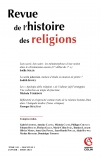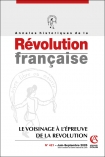
Revue de l'histoire des religions (4/2015)
Pour acheter ce numéro, contactez-nous
Recevez les numéros de l'année en cours et accédez à l'intégralité des articles en ligne.
La figure de Noé, en raison du caractère elliptique de la narration coranique, a fait l’objet dans la Tradition islamique, comme d’autres figures prophétiques, d’une amplification puisant dans des matériaux extra-coraniques que l’on est convenu d’appeler isrā’īliyyāt. Nous nous proposons d’abord d’examiner les acceptions de ce vocable, ensuite d’étudier la réélaboration des matériaux extra-coraniques dans la littérature exégétique, historiographique (Ṭabarī et Ibn Kathīr) et narrative (Tha‘labī et Kisā’ī), et de dégager enfin la manière dont ce traitement évolue avec Ibn Kathīr vers une attitude résolument hostile ayant pour but d’expurger la tradition exégétique et historiographique islamiques des matériaux exogènes.
Because of the elliptical nature of Qur’ānic narrative, the figure of Noah, like other prophetic figures, has within the Islamic tradition been an object of amplification that draws on the extra-Qur’ānic material that is known as the isrā’īliyyāt. This study begins by considering the meanings of this term, before studying the reworkings of extra-Qur’ānic material within the literature of exegesis, historiography (Ṭabarī and Ibn Kathīr) and narrative (Tha‘labī and Kisā’ī). It proceeds to show how the treatment of Noah shifts in the writings of Ibn Kathīr towards a resolutely hostile attitude, whose aim is the expurgation of exogenous materials from the Islamic exegetical and historiographical tradition.

